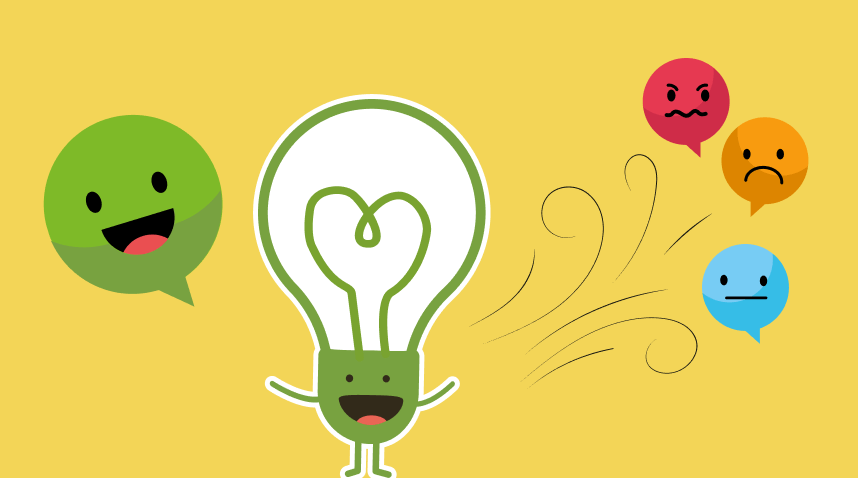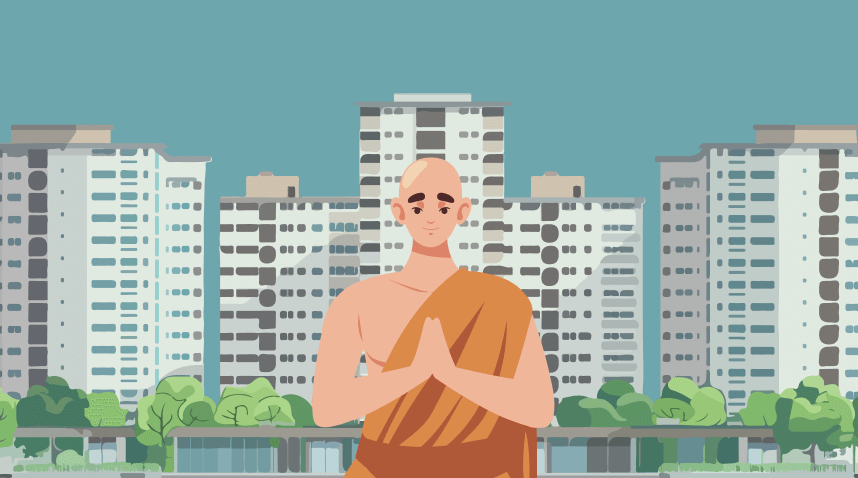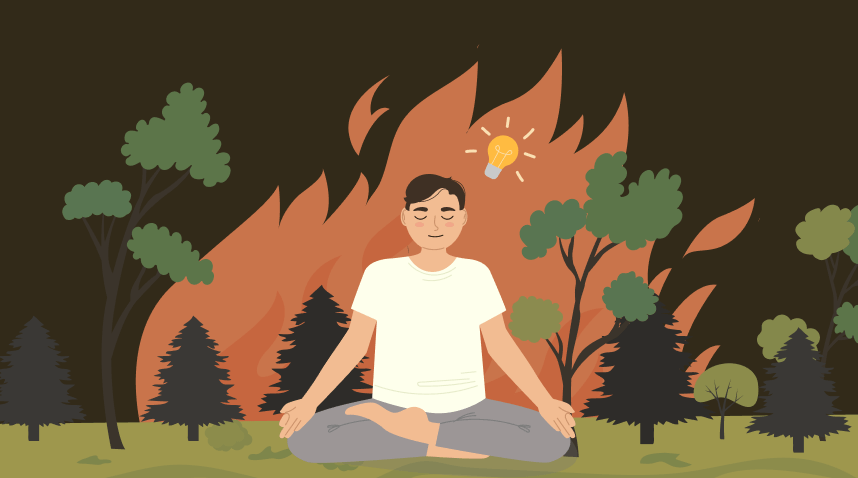Editor’s Note: This is a two-part series adapted and edited from PJ’s blog that captures his insights and reflections as he walks the path.
TLDR: Learn to let go of personal preferences and embrace selflessness. PJ shares how a dramatic bushfire experience reminded him that rationalization is a sign of unwholesome motivations. Explore 5 other lessons from PJ’s 2-month Rains Retreat. Read Part I here for the first 5 lessons.
6. Let go of personal preferences
Another personal learning, is linked to the understanding that “sankhara is the ultimate suffering”.
If sankhara is the ultimate suffering, then I shouldn’t be following them so tightly. So a resolution I kept (and still kinda follow nowadays) was to let go of my personal preferences, and to go with the preferences of the other people around me (as far as possible).
This is easier in a retreat than in daily life, TBH: in daily life, I still ultimately hold the responsibility for my welfare, so I am forced to ask myself what I really want.
But this has made it a lot easier to just go with the wishes and preferences of others.
TLDR – let go of your self and its preferences, by going with others’ wishes and preferences
The remaining three learnings came from a very dramatic bushfire which threatened the retreat centre and monastery on the day that the retreat ended, just the day before the monastery’s Kathina . It was a very interesting experience, which I don’t think I will forget! At one point, a fireman told everyone “Guys, Kathina is NOT HAPPENING. There is a FIVE PERCENT CHANCE that Kathina will happen!”…and I stayed (with my wife, and three other new friends) to see the five percent. 🙂
7. Good behaviours require no explanation; bad behaviours have Reason as a bodyguard
When the bushfire incident happened, I observed a large range of behaviours from my fellow retreatants.
What was interesting was that, when people did something good, there were usually little or no explanations given (or expected): people just gave a simple description and did it.
For example, one of my fellow retreatants came up to ask me if we should prepare food for the volunteer firemen (there were two of them, Matt and Ron, in a firetruck at the carpark). When I said that I had already offered them food but they said no, he replied, “They might not feel it’s right to say yes, but I don’t think they will say no if we prepare food for them; let me organize that” and he left to organize the sandwich-making party.
Similarly, nobody said “Please let me do more good: I need to make more good kamma to survive the bushfire”: people just helped out, which was wonderful and super inspiring to see!
In contrast, when more self-centred requests were aired, invariably these requests were accompanied by a lot of reasoning and logic, along the lines of “I need _ , because of __, __ and ___.”
It reminded me of an episode from my childhood. My parents sent me to a martial arts class every Sunday to “toughen me up” as a kid. It was a very harsh environment, and I always dreaded going to the class. I became an expert at coming up with all kinds of lies (I didn’t keep the five precepts as a kid, for sure!), because of this overwhelming sense of dread. And in my mind, I thought that it would be better if I could come up with more reasons why I shouldn’t attend the lesson: I was having a fever, an important test that week, AND my asthma was also acting up.
It’s a tell: if your mind is generating multiple reasons why you should or shouldn’t do something, that probably means your motivations are less than noble.
It also reminded me of this classic quote from David Hume:
Reason is, and ought only to be the slave of the passions, and can never pretend to any other office than to serve and obey them.
TLDR – the more reasons you’re generating to justify your actions, the more you should be suspicious of your real motivations.
8. Positive emotions can substitute and displace negative emotions

The people who showed gratitude to me in person were often the ones who also showed no fear. The reverse was true: the ones who were overcome with fear were often the ones who expressed zero gratitude in person.
To me, this points to a possible solution to fear (& other negative emotions) that the Buddha mentioned in MN 20. Following the Buddha, if you have a negative emotion, substitute it with a positive emotion by choosing a perception that generates that positive emotion.
TLDR – if you’re in the middle of a negative emotion, choose another perception which generates a positive emotion (like gratitude), to displace the negative emotion.
9. What is your real refuge?
The last learning from the bushfire was a question of refuge. Taking refuge means that you rely on something as a place of refuge, a source of safety.
It seemed to me that many people were taking refuge in the five sense world, and not really in the Buddha, Dhamma and Sangha.
Because they were constantly holding on to some hope that they could control the world of the five senses to their benefit. Their fear-driven desire (or desire-driven fear: same thing) then drives them to rationalise and proliferate. They can’t let go.
Do you know what is actually scarier than a bushfire? It’s the fires of greed, hatred and delusion. Because these three fires will cause you to repeatedly suffer and suffer. (See the famous fire sermon). And what is the fuel for these three fires? Wanting of the five sense world.
It also seemed to me that many people might have a mistaken understanding of Ajahn Brahm’s teachings: Ajahn’s teachings are not just fun, bad jokes and games.
Ajahn is actually teaching all of us how to live well, and thus actually also how to die well. Thus, the potential life-death situation we faced in the bushfire was actually a final exam for our practice.
If one’s mind was steady, and one was ready to let go of one’s life even, and focus on letting go, kindness and caring for others, then one probably really understood and trusted in the Buddha Dhamma Sangha.
I strongly encourage most people to take their Dhamma practice more seriously. Always be mindful and kind, by body speech and mind. Practice like you will die in a bushfire. Or, as the Buddha said, like their hair is on fire.
Seriously.
People might know intellectually that they can die at any time, but emotionally they might actually still be in denial.
Because absolutely nothing in the five-sense world is within our control. The sooner we accept it, the easier and smoother our practice and our lives.
Coincidentally, after my retreat, I read a brilliant Dhamma talk by Ayya Vayama on exactly this topic, about what is our real refuge. Unfortunately, I can’t seem to find the pdf of the talk: if you can, I highly recommend reading it.
TLDR – what is your real refuge: the material world or the Teachings?
10. How to be a “monk at home” without the Vinaya

In July, I visited Luang Por Ganha in July, and he gave (me) the advice of “be a monk at home, then be a monk in the monastery”. By that, he meant to practice towards being a streamwinner (and above) while at home.
During my silent retreat, the more I thought about it, the more it seemed to me to be an insurmountable puzzle. Because the monks have the Vinaya (Discipline code for monastics), which is a set of rules, but also is a kind of training programme which the Buddha had put in place for the monks, to train towards liberation.
As a layperson, how could I then “be a monk at home”, when I don’t have the training guidance of the Vinaya? How could I be sure that I wasn’t simply being led by the nose by my defilements?
So after I finished my silent retreat, I went to look for Ajahn Brahm one day and asked him exactly this question.
Ajahn gave a brilliant answer.
- Live simply. Renounce, simplify one’s life along the lines of the gradual training.
- Meditate a lot.
- Do acts of service, but don’t let others know you did them. Don’t do things which build up your sense of self.
- Beyond keeping precepts, practice sense restraint.
TLDR – simplify your life along the lines of the gradual training; meditate a lot; serve without credit; sense restraint


